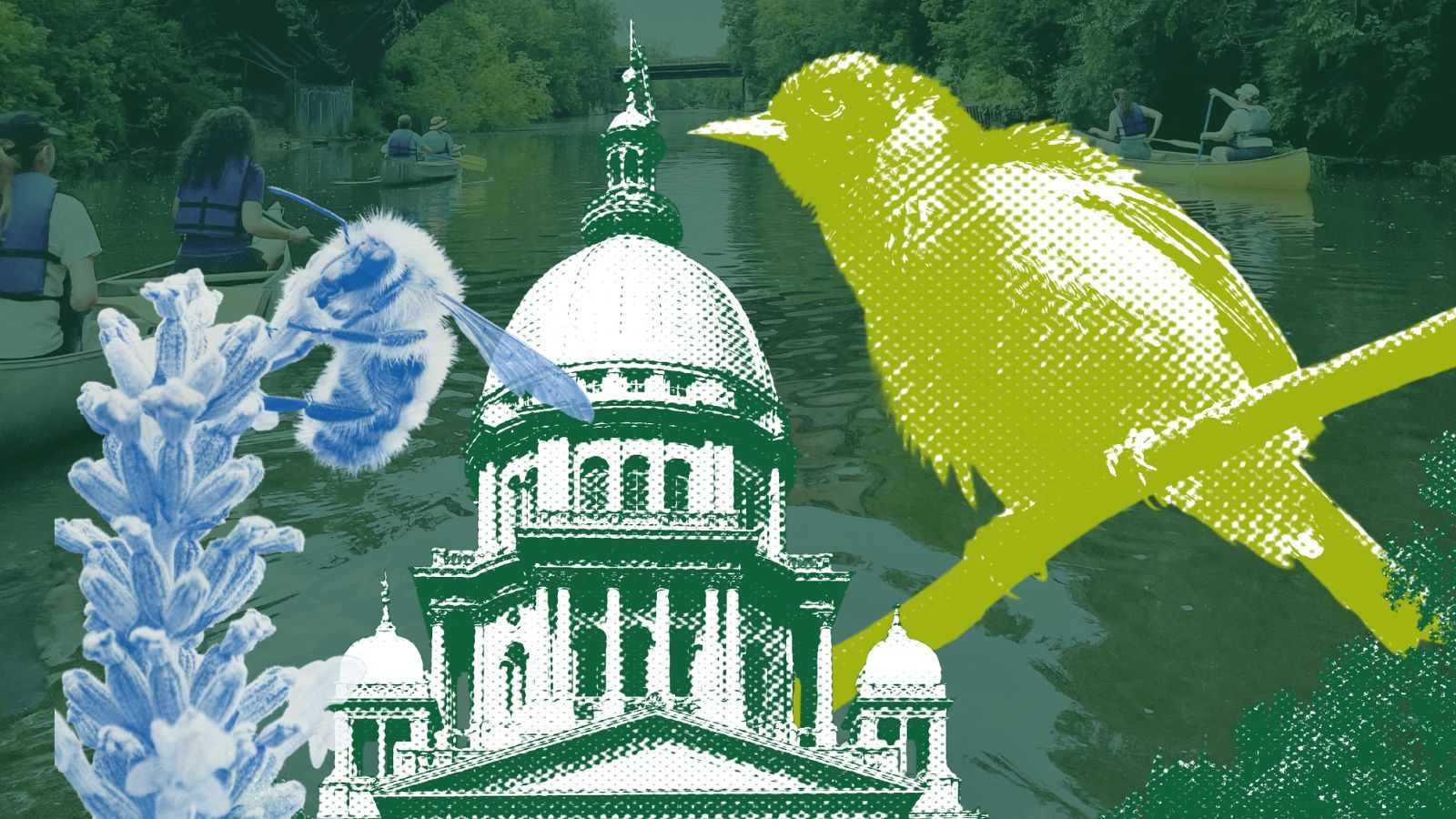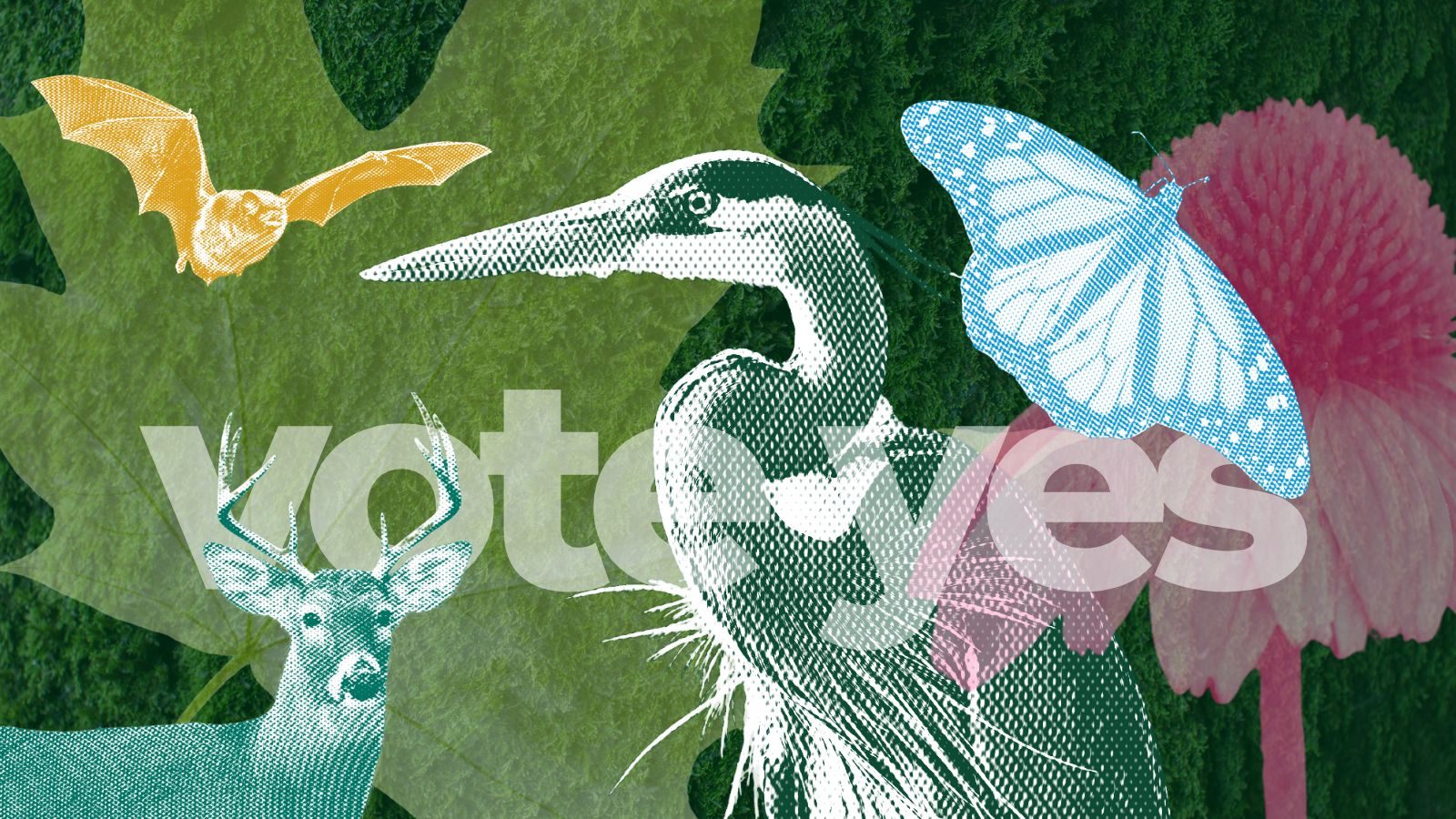By: Sergio Vargas, Chicagoland Conservation Policy Manager
Conservation was on the ballot in the 2024 November election. Land management agencies—DuPage, Kane, and Lake County Forest Preserve Districts and McHenry County Conservation District—asked voters to support their stewardship work through direct ballot initiatives that offered positive impacts for the conservation landscape in northeastern Illinois.
On election night, the initiatives in DuPage, Kane, and Lake counties quickly passed. The results in McHenry County would remain unknown for 14 days. When the dust settled, the votes revealed McHenry voters also seized their opportunity to protect air, water, and wildlife conservation efforts.
A Winning Educational Campaign
The conservation community worked diligently to educate voters about the benefits of the ballot initiatives. Its efforts were vindicated when voters chose to fund conservation and stewardship, paving the way for dedicated resources that will improve natural areas in their communities.
I was part of the steering committee for the Cook County referendum in Fall 2022, and in 2024 I worked alongside representatives from key organizations like Friends of the Forest Preserves and Openlands to coordinate an effective educational campaign—Vote Yes—predicated on the amazing value that open space brings to Illinoisans.
Despite the national election reflecting deep partisan divides, these referendums found broad bipartisan support. Electorally, Lake, DuPage, and Kane counties favored Kamala Harris, while McHenry went to Donald Trump. In an election cycle heavily defined by the stark contrast between “red” and “blue,” what made these ballot measures appealing to voters across the political spectrum?
Conservation is Broadly Bipartisan
Most people trust their local land management agencies. Positive experiences in nature, whether it’s a calming walk or a child’s play day, for example, contribute to this trust. The success of these referendums underscores broad support for the preservation and enhancement of natural areas for both environmental and community benefits.
Voters across the spectrum were activated to support their local initiatives. According to a survey of Illinois voters conducted by FM3 Research, 50% of voters believe the state should increase its funding for conservation, compared to only 15% who favor cuts and about 25% who support maintaining consistent spending. This “more spending versus cuts” split is roughly a three-to-one ratio in favor of increased investment. The poll also revealed that two‑thirds of Illinois voters are willing to pay up to $40 more per year in taxes to see these improvements made, with 70% saying they’d be willing to pay at least $10 more. Importantly, the poll notes that this strong support holds true across different genders, ages, and racial/ethnic groups, underscoring that the backing for increased conservation funding is broadly bipartisan.
What types of benefits could voters see in the future? To find clues, we have to look to the past.
Improving Opportunity and Accessibility
Back in Fall of 2022, Cook County voters passed a similar referendum that amplified the Forest Preserve District of Cook County’s priorities. An analysis of the District’s referendum funds spent outlines a path that these other counties will seek to replicate.
Initially, $35.9 million was allocated to the District. In 2023, $14 million has been spent, divided among legal, resource management, programming, communications, planning and development, landscape maintenance, facilities and fleet, permits, and pensions. The District’s Next Century Conservation Plan saw massive strides, as did its land acquisition plans. Recently, the District celebrated a long-awaited milestone: it passed 70,000 acres of total holdings. An acquisition in far south suburban Cook County made this possible. Although this was most recent, the District has been diligently acquiring small parcels of land across the county, connecting natural corridors and bringing the excitement of exploring new areas to even more Illinoisans.
The northeastern counties’ land management agencies outlined similar plans with several key purposes, including wildlife habitat preservation, water quality safeguards, and improvements to outdoor recreation opportunities and accessibility.
Everyone Deserves a Place in Nature
Moving forward, it’s critical that these land management agencies not only execute on their campaign promises, but amplify their efforts to the public. The reality is that land management agencies commonly operate with lean communications teams, which can make it challenging to showcase natural area improvements, trail maintenance and expansion, and recreation opportunities. Yet, transparency and effective outreach are key. When residents see tangible results, whether it’s more accessible trails or facility improvements, they’re more likely to stay engaged and tell their friends and family about the value of conservation.
Still, local referendums can only go so far to bridge gaps, especially on the issue of accessibility. Many parks and preserves have yet to meet the requirements of the Americans with Disabilities Act (ADA), leaving residents with disabilities fewer options to safely and thoroughly navigate local natural areas. Targeting accessibility concerns in future budgets and development plans will help to ensure that everyone, regardless of mobility or ability, can experience the nature their tax dollars help sustain.

Support from Springfield is Critical
Ultimately, the most transformative conservation efforts will require buy-in at the state level. IEC continues to educate decision-makers on the importance of preserving nature, especially natural areas with high ecological value. Even as Kane, DuPage, Lake, and McHenry Counties demonstrate huge progress with direct public funding, they highlight a broader need for increased state conservation support.
Illinois has a strong history of conservation. However, the state has fallen behind over the past several decades in regard to the number of acres preserved. Significant funding from Springfield can bolster the work of these land management agencies. Projects including large-scale habitat restoration, cross-regional trail connectivity, and expanded community programming could begin in earnest. This is key to shaping public opinion and support.
The success of these referendums is a significant step and a signal of the bipartisan desire to protect and preserve the highly threatened natural world. As we expect to see these local agencies roll out their projects, the next piece should be a concerted effort to secure greater state investment. Together, we can protect the natural areas for the benefit of all communities as well as generations to come.
Facts + Figures
- Approximately 4% of Illinois’ land, or about 1.2 million acres, is formally protected, compared to the national average of 13%.
- The outdoor recreation sector contributed $639.5 billion to the U.S. economy in 2023, accounting for 2.3% of the gross domestic product (GDP).
- In November 2024, the Forest Preserves of Cook County (FPDCC) surpassed 70,000 acres of protected land, marking a significant achievement in urban conservation. This expansion was facilitated by the 2022 “Clean Air, Clean Water, and Wildlife” referendum, which garnered overwhelming support from voters.
- Approximately 4% of Illinois’ land, or about 1.2 million acres, is formally protected, compared to the national average of 13%.
- Studies suggest that every $1 invested in natural area protection or restoration in Illinois can yield upwards of $4 in ecosystem service benefits, including flood control, water filtration, and recreation-based tourism.
- Since the early 2000s, partnerships among nonprofits, the state, and federal agencies have restored or enhanced more than 100,000 acres of wetlands across Illinois—improving water quality and wildlife habitat while reducing flood risks in vulnerable communities.
- Less than 0.01% of Illinois’s original 22 million acres of native prairie remains, yet tallgrass restoration efforts (including the 19,000+ acres at Midewin National Tallgrass Prairie) are making Illinois a leader in reviving this globally imperiled ecosystem.
About the Author
In 2022, Sergio joined the massively successful Vote Yes Campaign that resulted in an annual increase of $40 million in the Forest Preserve District of Cook County’s coffers. In early 2024, Sergio was appointed to the steering committee for the Chicago Wilderness Alliance. This work allows him to help guide the region’s overall conservation vision.
Read more by Sergio:
- Community Conservation at Okàn Savanna
- To Protect Critical Open Space, Voters in Four Northern Illinois Counties Should Vote Yes
- Space to Grow: Greening Chicago One Playground at a Time

